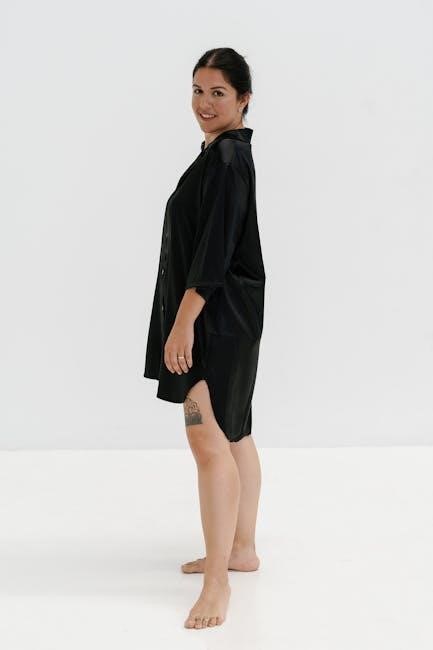The Sensory Profile 2 is a set of judgment-based questionnaires completed by parents or teachers to assess a child’s sensory processing patterns, providing valuable information to formulate hypotheses about their behavior and needs, using a standardized method.
Age Range for Sensory Profile 2
The Sensory Profile 2 is designed for children aged 3:0 to 14:11 years, making it a valuable tool for assessing sensory processing patterns in children across a wide range of ages and developmental stages.
The questionnaire is completed by caregivers or teachers who have regular contact with the child, providing a comprehensive understanding of the child’s sensory processing abilities.
The age range of the Sensory Profile 2 allows for the assessment of children in various settings, including home and school, and can be used to identify potential sensory processing difficulties that may impact a child’s behavior and daily functioning.
The assessment is particularly useful for children who are exhibiting sensory-related behaviors or difficulties, and can be used in conjunction with other assessments and interventions to support the child’s overall development.
The Sensory Profile 2 is a standardized assessment tool, and its age range is specifically designed to capture the sensory processing patterns of children during a critical period of development.
The information gathered from the Sensory Profile 2 can be used to inform strategies and interventions to support the child’s sensory processing needs, and to promote overall development and well-being.
By assessing sensory processing patterns in children aged 3:0 to 14:11 years, the Sensory Profile 2 provides a valuable resource for caregivers, teachers, and healthcare professionals working with children.

The assessment is an important tool for identifying potential sensory processing difficulties, and for developing targeted strategies to support the child’s sensory processing needs.
The age range of the Sensory Profile 2 makes it a versatile and widely applicable assessment tool, suitable for use in a variety of settings and contexts.
The Sensory Profile 2 is a valuable resource for anyone working with children, and can be used to support the development of children with a range of sensory processing needs.

Components of Sensory Profile 2
The Sensory Profile 2 includes a set of questionnaires and forms to assess sensory processing patterns, completed by caregivers or teachers, providing a comprehensive understanding of a child’s sensory needs and behaviors, using standardized methods always.
Method of Administration
The Sensory Profile 2 is administered through a questionnaire that is completed by the child’s caregiver or teacher, providing a comprehensive understanding of the child’s sensory processing patterns and behaviors. The questionnaire is designed to be easy to use and understand, and can be completed in a relatively short amount of time. The administrator, typically an occupational therapist, will provide the questionnaire to the caregiver or teacher and instruct them on how to complete it. The questionnaire is then returned to the administrator, who will score and interpret the results. The Sensory Profile 2 can be administered in a variety of settings, including clinics, schools, and homes, making it a convenient and flexible assessment tool. The administrator will review the results with the caregiver or teacher, providing them with a better understanding of the child’s sensory needs and behaviors, and helping to inform strategies for supporting the child’s development and well-being. The method of administration is straightforward and easy to follow, making it accessible to a wide range of users. Overall, the Sensory Profile 2 is a valuable tool for assessing and understanding sensory processing patterns in children.

Interpretation of Results
Results are scored and interpreted by professionals, providing insights into sensory processing patterns and informing strategies to support child development, using standardized methods and criteria to ensure accuracy and reliability always matters.
Collaboration with Caregivers and Educators
Collaboration with caregivers and educators is a crucial aspect of the Sensory Profile 2, as it allows for a comprehensive understanding of a child’s sensory processing patterns in different settings. This collaboration involves working closely with parents, teachers, and other professionals to gather information about the child’s behavior and needs. By doing so, a more accurate and complete picture of the child’s sensory profile can be obtained, which can inform strategies to support their development. The Sensory Profile 2 is designed to be completed by caregivers and educators, who provide valuable insights into the child’s behavior and needs. This information is then used to identify patterns and trends, and to develop targeted interventions to support the child’s sensory processing and overall development. Effective collaboration between professionals, caregivers, and educators is essential to ensure that the child receives the support they need to thrive. The Sensory Profile 2 provides a framework for this collaboration, facilitating the sharing of information and the development of strategies to support the child’s sensory processing and overall well-being. This collaborative approach helps to ensure that the child’s needs are met, and that they receive the support they need to succeed.

Author and Copyright Information
Winnie Dunn, PhD, OTR, FAOTA is the author, with copyright 2014, holding rights to the Sensory Profile 2 assessment tool, guiding its use and application in various settings, professionally.
Importance of Caregiver Reporting
The Sensory Profile 2 relies heavily on caregiver reporting, which is essential for gathering accurate information about a child’s sensory processing patterns. Caregivers, such as parents or guardians, have extensive knowledge of the child’s daily behaviors and habits, making their input invaluable. By completing the Child Sensory Profile 2 questionnaire, caregivers provide crucial data on the child’s frequency of engagement in various behaviors, allowing professionals to assess their sensory processing abilities. This information is then used to formulate hypotheses and develop strategies to support the child’s needs. The importance of caregiver reporting lies in its ability to provide a comprehensive understanding of the child’s sensory experiences, which may not be fully apparent in a clinical or observational setting. As such, caregiver reporting is a critical component of the Sensory Profile 2, enabling professionals to make informed decisions and develop effective interventions. The collaboration between caregivers and professionals is essential for ensuring the child receives the most appropriate support, and caregiver reporting plays a vital role in this process, ultimately contributing to the child’s overall well-being and development.
